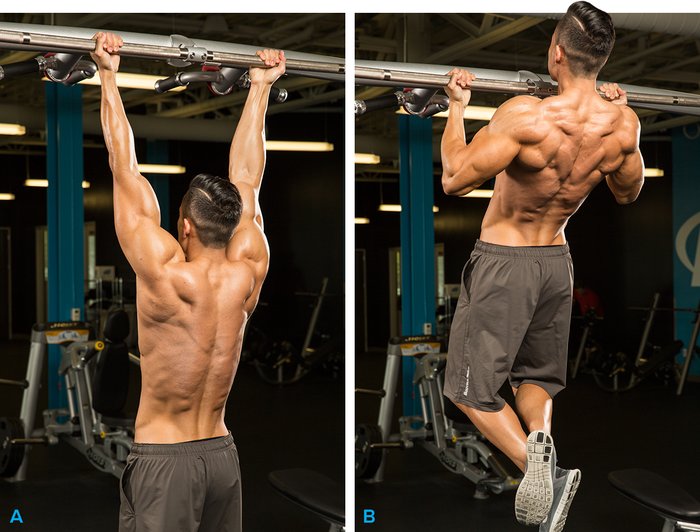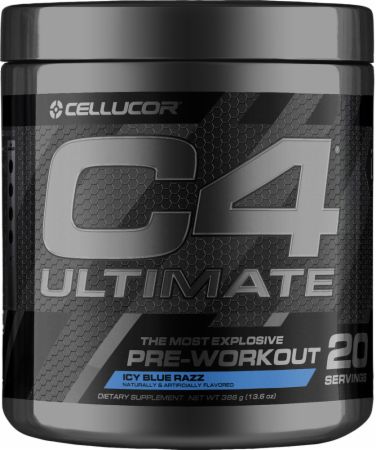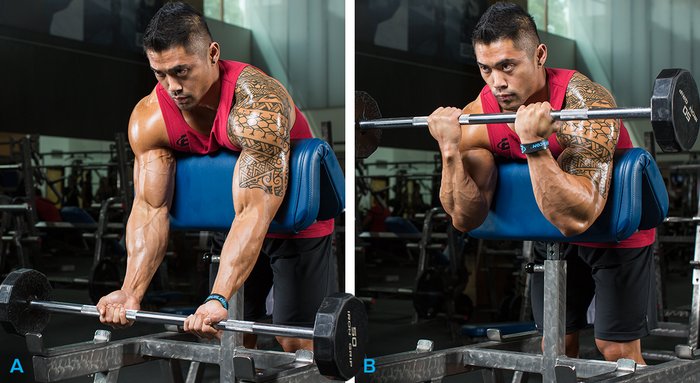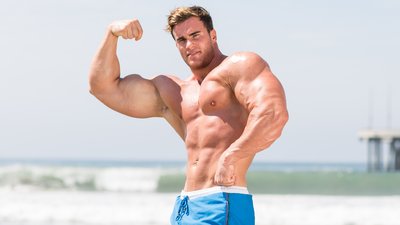If you want big, defined arms, you're probably going have to do some curls—nobody's debating that! But workout after workout, slogging through the same style of curls, every day, for months or years on end? No thanks!
Rather than continuing to do more of the same, work these seven moves into your biceps routine to jump-start growth again. You may already be doing some of them as an accessory, but consider this your push to do them more frequently or heavily to get new results!
It's an approach we took with triceps and shoulders, and it works just as well for the front of the arms. So curl up and learn something!
1. Chin-Up
This movement probably isn't new to you, but thinking of it as an arm exercise might be. Back in 2010, coach Bret Contreras, PhD, CSCS, performed an informal research study where he compared mean and peak EMG activity in 45 different back and biceps exercises, and he found that the weighted chin-up and weighted wide parallel-grip pull-up were the top two performers, edging out the barbell curl and EZ-bar curl.

Chin-Up
Sure, most of us already do some type of standing curls in our arm routine, but the inclusion of those heavy multijoint variations may be just the thing to tighten the old sleeves.
Key training tip: If you can do more than about 10 reps with good form, it's time to increase the resistance. Increasing the resistance of this particular movement recruits more motor units and has been shown to lead to gains in both strength and hypertrophy.1 If you do biceps with back, this could make a good transition exercise between the two body parts.
2. Lying Cable Curl
You know you're not supposed to cheat on biceps exercises, at least most of the time, but it's hard not to! This variation makes cheating nearly impossible, because you're lying squarely on the floor.
You can do it several ways, but I recommend either straddling the lower cable or use the seated-row machine. You can use any number of attachments; the EZ-bar or straight bar with rotating sleeves are probably the favorites, though you can also use a rope and supinate your hands at the top as you curl.
Key training tip: Try lifting your elbows slightly off the floor so they're not rubbing against it. Also try this harder-to-easier superset: Do as many reps as you can lying on the floor, then stand up and complete as many more as you can. Because the standing version allows a bit more momentum, you'll be able to complete more total reps and work past the initial point of failure.

3. Smith Machine Drag Curl
Most curls are done such that the weight moves in a semicircular arc. The drag curl is instead done by pushing your elbows back as you curl and "drag" the bar up your torso, working both the long and short biceps heads.
Though it can be done with a barbell, I prefer the Smith machine version. Just don't expect to get the same range of motion you would on a regular curl; most likely, you'll be able to lift it only as high as your upper abs or lower chest.
Key training tip: If you have access to an angled Smith machine, use it, but stand inside the machine facing out. You can also do heavy negatives on this move, but you'll need a training partner. Each negative rep should last 4-5 seconds. When you can no longer take that long to slow it down, rack the bar.

4. Cable Preacher Curl
Schlepping the preacher bench over to the cable station may seem like unnecessary extra work, but there's a good reason to do it. With the free-weight version, once your forearms reach a position perpendicular to the floor, it becomes a resting spot as gravity pushes straight down. Not so with a cable, in which the line of pull instead comes from the side, providing constant tension throughout the move.
Key training tip: Keep your triceps flush against the pad at all times and don't allow your elbows to flare out. Try out various attachments like the rope, EZ-bar, or single-arm D-handle for variety.
5. Scott Curl
This tweak on the common preacher curl is named after former two-time Mr. Olympia Larry Scott, who swore by this movement for his massive biceps. The only difference is that in this variation, you curl off the steeper side of the bench—and that's a whole lot harder.

Scott Curl
Your arms are still in front of the plane of your body, meaning the long head isn't fully stretched and is therefore incapable of contracting strongly, but the work against gravity is brutal. This can be done with an EZ-bar or straight bar, or you can use a dumbbell to work each arm individually.
Key training tip: Keep the triceps flush against the pad. Having a spotter is helpful for getting an extra rep or two, or grab a dumbbell and use your free hand to self-spot. This one doesn't work as well with the cable because the range of motion is more limited at the bottom.
6. Dumbbell Hammer Curl
You're probably familiar with this one, but how often do you includes hammer curls in your arm routine? Every once in a while, maybe. But there's a compelling reason you should be doing it more often!
The road to thicker arms isn't just paved with curling exercises for the long or short heads. The brachialis lies underneath the biceps brachii, and focusing on movements that bring it up will help increase the overall circumference of your arms. Hammer-grip exercises target the brachialis, as well as the biceps' long head.

Dumbbell Hammer Curl
Key training tip: Don't supinate your hands as you perform the movement. Maintain the palms-facing-each-other hand position throughout to really focus on the brachialis.2 Perform all reps with each arm rather than alternating arms, which allows one side to rest between each rep. Also avoid coming all the way down if that allows you a momentary rest between reps. This movement can also be done with a rope attachment with a cable.
7. Eccentric Standing Curl
You probably know how much you can curl. So how much can you lower? That might be the answer to your arm quandary.
Training innovator Charles R. Poliquin is a big fan of eccentrics. In the article "The Perfect Rep Scheme for Strength and Size," he noted that the stretch provided by Olympic lifting moves such as the power snatch from blocks may be "the missing ingredient in your quest for bigger biceps." But even if you're not going to perform such technique-intensive moves, you can work the same mechanism by doing some curls where you only perform the lowering portion. In a piece on his website, Strength Sensei, Poliquin noted that such eccentric training can generate up to 1.3 times more tension than concentric training.
Key training tip: Don't jump right to maximal weights here. Start off by doing forced eccentrics after a set with your normal working weight, and over time, work up to a few reps where you have a spotter lift the weight to the start position while you take 4-6 seconds to slowly lower it. The muscle damage incurred can be very significant with heavy DOMS, so don't overdo this exercise, and only include it for one movement at a time in your program.
References
- Atha, J. (1981). Strengthening muscle. Exercise and Sport Sciences Reviews, 9(1), 1-74.
- Dudley, G. A., Tesch, P. A., Miller, B. J., & Buchanan, P. (1991). Importance of eccentric actions in performance adaptations to resistance training. Aviation, Space, and Environmental Medicine, 62(6), 543-550.
- Wuebben, J., & Stoppani, J. (2009). Stronger Arms & Upper Body. Human Kinetics.

